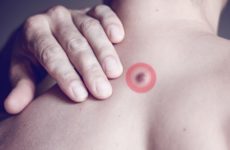Removing a heel wart is sometimes more difficult than getting rid of such growths in other parts of the body.
Modern technologies allow it to be carried out quite effectively and without consequences. In order to choose a treatment regimen, it is necessary to know the causes of the pathology and the risks arising from their presence.
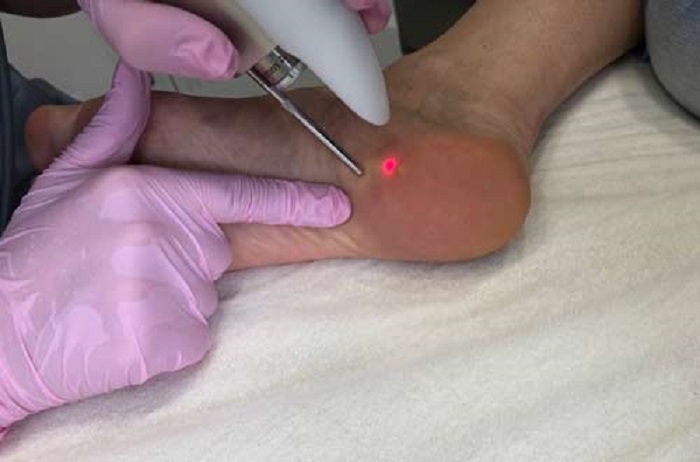
Содержание:
What is a heel wart?
A calcaneal wart is a type of plantar wart and is a hard formation on the skin of the heel of the foot, rising above the surface and covered with keratinized epithelium.
In fact, this is a benign neoplasm caused by the human papillomavirus (HPV). In the International Classification of ICD-10, these warts have the code B07.
In appearance, the calcaneal wart is a rounded seal with a diameter of up to 20–25 mm, which rises 1–2 mm above the skin. Its color usually does not differ from the skin, but sometimes has a pinkish or brownish tint.
In the initial period, the wart has a smooth surface, but gradually becomes rough due to the layering of the epidermis. Education takes on a yellowish tint.
As a rule, single warts are observed. An increase in the number of growths indicates dangerous HPV activity. Sometimes a wart on the heel forms a “mosaic” grid of many small growths.
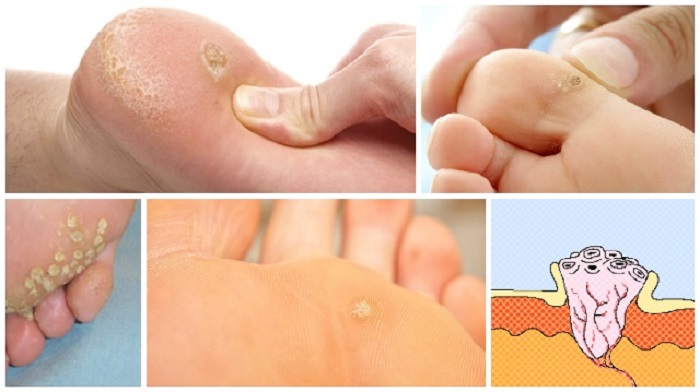
Reasons for the appearance
All types of warts are generated by HPV, and they are infected by contact. The main feature of this virus is its extraordinary survivability.
Its carriers are the majority of people, but it manifests itself only in violation of the immune defenses or excessive infection, when the immune system cannot cope with the infection. Heel warts are mainly caused by HPV strains 1, 2, 4, 27 and 57.
Infection most often occurs in a humid environment, at elevated temperatures, which is typical for baths, saunas, swimming pools, gyms, beaches and other places where a person walks barefoot. The following factors have a provoking effect on the development of heel warts:
- excessive sweating of the legs or, conversely, dry skin, leading to the appearance of cracks;
- wearing uncomfortable shoes, leading to rubbing of the skin on the heel;
- mechanical damage to the skin (scratches, cuts, abrasions, cracks, open wounds);
- diseases that disrupt the blood supply and nutrition of the tissues of the foot (diabetes mellitus, varicose veins, atherosclerosis, etc.);
- pathologies leading to foot deformity (arthritis, osteoarthrosis, flat feet).
The main reason is malfunctions of the immune system. The activation of HPV, which is in a latent state, is caused by a decrease in immune protection in various diseases, excessive physical and psychological stress, vitamin deficiency, poor lifestyle, etc.
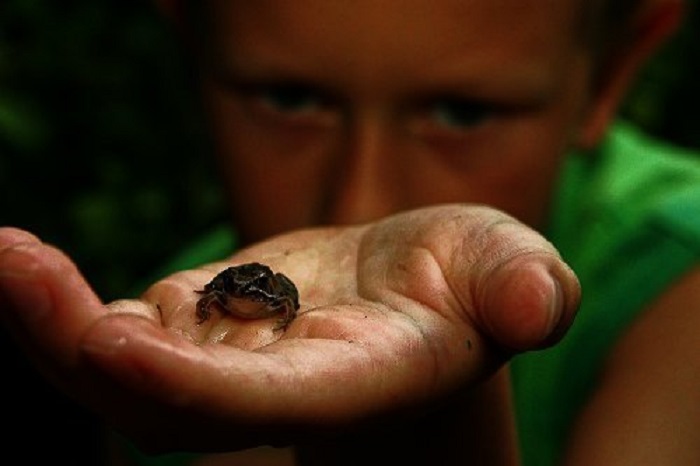
Why is she dangerous?
Despite the benign nature, heel warts are fraught with a lot of trouble. They are located in a dangerous area.
The tubercles that rise above the skin are often damaged by rubbing against shoes while walking, putting on or taking off shoes, and mechanical damage when walking barefoot. The painlessness of warts exacerbates the picture. A person simply forgets about their existence, which increases the risk of injury.
A damaged wart becomes a favorable environment for the vital activity of various microorganisms. An inflammatory response begins.
In the normal state, the wart does not have a pain syndrome, but with inflammation, sharp pains appear when resting on the heel. Pathogenic organisms that can cause various infectious diseases can also penetrate through the injured growth.

The biggest danger is oncogenicity. Under certain conditions, HPV can cause a malignant neoplasm. Of the above strains, HPV 57 is the most dangerous.
This risk indicates the need for testing for warts in the presence of signs such as growth progression, pain, itching, bleeding, etc.
Diagnosis of the disease
Diagnostic studies are necessary to differentiate the wart from other pathologies, identify the risk of complications, determine the depth of germination to determine the treatment regimen and the oncogenicity of the virus. Diagnosis and treatment is provided by a dermatologist, and if there is a risk of malignancy, a dermato-oncologist.
First of all, dermatoscopy is performed. It helps to differentiate the growth from calluses and hyperkeratosis. A scraping of the upper layer of the epithelium is taken for examination.
To determine the strain of the virus, it will be necessary to carry out PCR diagnostics, which detects the DNA of the virus. The depth of germination of the wart is determined by ultrasound of the skin formation. If oncology is suspected, scrapings and biopsy specimens are sent for histological examination.

How to remove, remove the build-up?
A heel wart does not hurt, and without damage, it may not particularly disturb a person for a long time. However, the above risks of complications oblige to keep the pathology under control.
The only effective treatment is complete removal of the tumor. However, in this matter, self-medication is unacceptable. The calcaneal wart grows deep, and after self-removal, roots usually remain, which leads to a recurrence of the growth in the same place.
How to get rid of the growth surgically?
Significantly germinated warts are removed by the following methods:
- cryogenic impact . It is provided by a sharp freezing of the affected tissues with the help of liquid nitrogen. This technique is used for single, not very deep formations. The procedure is performed with a local anesthetic. The main disadvantages are the risk of damage to healthy tissues and pain after surgery.
- A radio knife or radio wave removal of a wart is provided by a special apparatus with looped tips. The emitted radio wave cuts tissues, cauterizes sections of blood vessels. The postoperative period reaches – 15-18 days.
- laser removal . This is the most efficient, modern way. A thin laser beam cuts tissue precisely to the specified depth. At the same time, the vessels are cauterized, which eliminates bleeding. Healing time – up to 12 days.
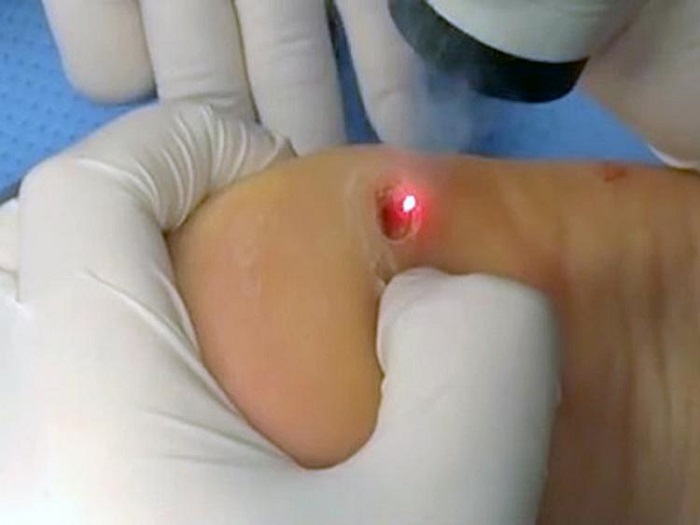
With the help of pharmaceuticals
The first level treatment covers the initial stage of development of heel warts, when they have not had time to germinate deeply. This treatment technology is called keratosis, since the removal is carried out with pharmaceutical preparations of the keratolytic type. These agents kill mutated cells and exfoliate them.
The most common keratolytics are salicylic and trichloroacetic acid. The heel is soaked in warm water for 8–12 minutes, dried, and then a layer of keratinized epidermis is removed with the help of pumice.
A pharmaceutical preparation is applied to the treated area. The course of treatment is 12-15 weeks. It is convenient to carry out a similar procedure using a special patch – Salipod .
Modern medications include: Vartoks, Solcoderm, Kollomak , Duofilm, Verrukacid, Ferezol, Cantharidin. They are available in the form of ointments, solutions and creams. The desired effect is provided by concentrated acids or alkalis containing them.
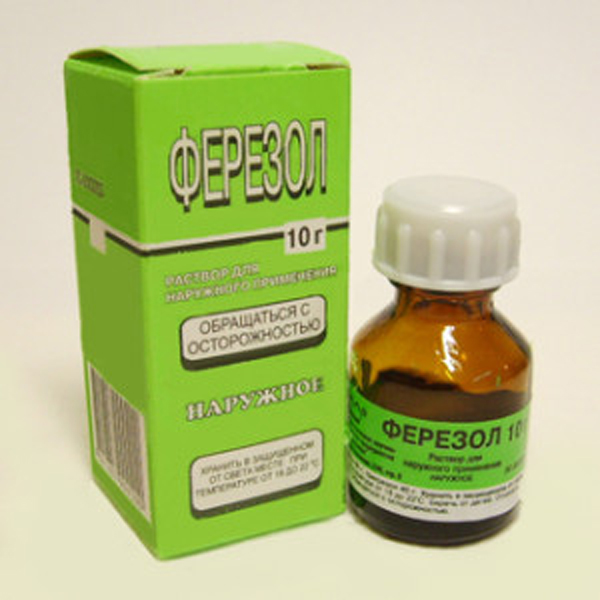
Another direction of drug treatment is local immunotherapy. In this case, the immunostimulant is injected directly into the lesion in the form of an ointment, solution, or by injection into the wart.
The most well-known drug is imiquimod. It is applied as a cream on the growth, every other day. The drug stimulates the production of cytokines, which helps fight HPV. Your doctor may prescribe Fluorouracil cream. It is applied daily (up to 2 times a day).
Features of treatment in children
Given the fragile immune system in a child, heel warts when infected with HPV are observed in children quite often.
Such formations interfere with taking the first steps and violate the correct walking. Treatment of babies, first of all, is aimed at increasing general and local immunity, which allows the body to cope with the virus itself.
In general, the removal of children’s warts differs little from the treatment of adults. The decision to use the desired scheme is made by the doctor, taking into account the age of the patient.
To help the child’s body follows the following methods:
- the use of immunostimulants and vitamin complexes;
- providing nutrition enriched with vitamins;
- foot hygiene and skin care;
- the right choice of shoes for the child;
- exclusion of walking barefoot in public places.
Although warts are benign formations, their localization on the heels is fraught with a number of problems. With frequent damage to them, serious complications are possible.
Removal of heel warts surgically or with the help of pharmaceutical products eliminates all risks. Such treatment should be carried out only on the prescription of a doctor and in specialized institutions.





